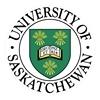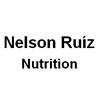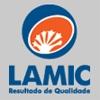Explore all the information on
NIR - Feed analysis
Welcome to the page about NIR - Feed analysis of Engormix; a source of knowledge on NIR - Feed analysis.
1 INTRODUCTION North America currently imports plant-based feed ingredients, such as soybean meal, from countries that are endemically infected with viruses of economic and pathologic significance to swine including porcine epidemic diarrhoea virus (PEDV), Seneca virus A (SVA), porcine reproductive and respiratory syndrome virus (PRRSV), classical swine fever virus, pseudorabies virus, foot and mouth disease virus (FMDV) and African swine fever virus (ASFV; Blomme et al., 2022;...
Comments : 0
Recommendations: 0
Introduction The “traditional” approach to food quality and safety management is based on end-product testing. However, end-product testing provides only very limited information about the safety status of a food. The food safety crisis of the 1990s (Listeria, Salmonella, Escherichia coli, Campylobacter, dioxins, antibiotics, acrylamide, etc.) highlighted the failure of this traditional approach. If a dangerous organism is found, it means something; but its absence...
Comments : 2
Recommendations: 0
Important data:
Cobb Chicken: 500
Weight at birth: 42 gr
Weight at 25 days: 2000 gr
Average daily weight gain: 78.32 gr
Dr. Jovanir Inés Muller Fernandes, associate professor at the UFPR Palotina...
Comments : 9
Recommendations: 1
...
Comments : 0
Recommendations: 0
...
Comments : 0
Recommendations: 0
Introduction Near record high feed, fuel, and fertilizer prices, and high inflation rates all have put increasing economic burden on beef producers. The increased cost of feeding cattle means that increasing feed efficiency is critical to feedlot production. Historically, feed costs represent about 70% of the total cost of production for feedlot operators and therefore, feed efficiency has 4 x greater economic return when compared to the same improvement in feedlot growth (Gibb and...
Comments : 0
Recommendations: 1
In scientific publications in the 1980s – 1990s you can find information about a spreading of mycotoxins. But since that time cultivars and agricultural technology have changed, methods of grain storage and grain processing have improved due to the overal progress. Between January 2009 and December 2011 Austrian researchers selected 7049 samples of grain on different continents. The samples were analyzed for the occurrence of aflatoxins (AFB), zearalenone (ZEN), deoxynivalenol (DON),...
Comments : 0
Recommendations: 1
Nelson Ruiz (Nelson Ruiz Nutrition) highlights the relevance of quality parameters in times of scarcity or supply chain issues, in this interview during IPPE 2023 in Atlanta, USA....
Comments : 0
Recommendations: 0
Introduction The United Nation’s sustainable development goals aim to “…achieve a better and more sustainable future for all” by addressing “…the global challenges we face, including poverty, inequality, climate change, environmental degradation, peace and justice.” These challenges are interconnected and depend on integrating innovative ideas of several science fields to achieve sustainability, especially in livestock production...
Comments : 0
Recommendations: 1
Introduction Academia and industry have invested huge resources into defining both the nutrient composition of feedstuffs and nutrient requirements of meat and egg-type poultry. Both aspects are highly complex because of their dynamic nature. Nutrient availabilities depend on the genetics of each feedstuff, but also geographic region, weather, and growing conditions. These factors impact both the quantity of nutrients and the molecular structures from which those nutrients must...
Comments : 0
Recommendations: 1
Introduction Medicinal plants are a rich source of phytochemicals and natural compounds (alkaloids, flavonoids, steroids, terpenoids, tannins and phenols) with marked therapeutic properties (Ruchika et al ., 2022; Roma-Marzio et al ., 2017). They are potential source of drugs and are traditionally used in the treatment of digestive disorders, measles, cold, cough, diarrhea, arthritis, skin disease, joint pain, hemorrhoids, fever, sore throat and sexually...
Comments : 0
Recommendations: 0
Dr. Markus Wiltafsky-Martin, Responsible for Service Commercialization at Evonik Animal Nutrition, underscores why AMINODat® 6.0, is the most comprehensive animal nutrition database in the world that comprises nutritional data of more than 18,000 feed ingredient samples from all over the world and over 900,000 analytical results. ...
Comments : 18
Recommendations: 17
Introduction Medicinal plants are a rich source of phytochemicals and natural compounds (alkaloids, flavonoids, steroids, terpenoids, tannins and phenols) with marked therapeutic properties (Ruchika et al ., 2022; Roma-Marzio et al ., 2017). They are potential source of drugs and are traditionally used in the treatment of digestive disorders, measles, cold, cough, diarrhea, arthritis, skin disease, joint pain, hemorrhoids, fever, sore throat and sexually...
Comments : 0
Recommendations: 0
Francesca Mazza (Arm & Hammer) presents her poster on yeast and feed quality, during the Symposium on Gut Health in St. Louis, USA....
Comments : 0
Recommendations: 0
At VIV Asia 2019, Lihong Zhang, NIR Analytical Services Specialist at Adisseo Asia Pacific, explains the use of PNE, the Adisseo NIR service is a unique decision-support service for raw material selection. PNE uses near-infrared (NIR) spectroscopy to predict the nutritional quality of raw materials....
Comments : 2
Recommendations: 0
INTRODUCTION The use of soybean meal in poultry diets can be tested for antinutritional factors, which is easily identified with ureatic activity and protein solubility in KOH analysis. This research aimed to evaluate soybean meal quality measured by ureatic activity and KOH solubility in poultry feed mills. MATERIAL AND METHODS For this analysis, 283 samples were obtained from a broiler feed mill located in Goiás, Brazil. Soybean meal samples were...
Comments : 18
Recommendations: 4
We are happy to announce that the 7th edition of the international course "Fundamentals and Applications of Near Infrared Spectroscopy" is here again.
This 100% online course is conducted by the International Council of Near Infrared Spectroscopy and the University of Córdoba and taught by worldwide NIRS reputed lecturers. The theoretical lectures, practical exercises, interactive self-learning exercises and tools, virtual visits to laboratories, etc. cover basic NIR concepts,...
Comments : 0
Recommendations: 0
We are presently going through a challenging period of high prices of raw materials and a limited availability of some of these materials. The use of less common raw materials that are readily available, and potentially less expensive, can be an alternative to traditional protein and energy sources and may help reduce the pressure on feed costs. However, new types of ingredients need extra attention to be paid to make sure they are suitable for feed processing, are free of contaminants,...
Comments : 1
Recommendations: 2
Edgar Oviedo-Rondón (North Carolina State University) went over the research presented in different papers on this subject, during IPPE 2022 in Atlanta, USA....
Comments : 0
Recommendations: 0
Introduction Mycotoxins are toxic secondary metabolites produced by some filamentous fungi that grow naturally in many commodities around the world [1,2]. In Brazil, contamination of substrates by mycotoxigenic fungi is rather common, since climatic conditions favor their development and the production of mycotoxins. These substances are chiefly produced by three fungal genera: Aspergillus, Penicillium and Fusarium [3]. Of these, the genus Fusarium is of great importance for it...
Comments : 0
Recommendations: 0





























